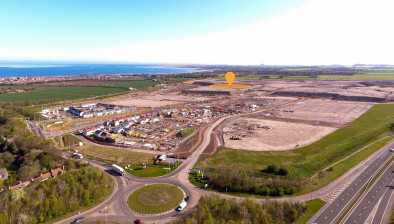Study forecasts increase of Scottish house prices and private rents
 House prices and private rents in Scotland’s cities are expected to soar in the next five years because of a lack of new homes being built, researchers have predicted.
House prices and private rents in Scotland’s cities are expected to soar in the next five years because of a lack of new homes being built, researchers have predicted.
Property consultancy JLL said that continued political and economic uncertainty surrounding Brexit and a possible second referendum will ensure that housebuilders maintain a positive but cautious approach.
This in turn will place continued pressure on house prices and rent between 2017 and 2021, especially in key city centres where demand for homes continues to outpace supply.
According to the study, house prices in Edinburgh will increase by 23.4 per cent by 2021, almost double the UK average, and 4 per cent more than London.
In Glasgow, where many properties cost less, a 15.4 per cent rise in the same period is forecast, ahead of the average increase in Scotland of 10.9 per cent.
The report also revealed the extent to which the cost of renting will jump for similar reasons. By 2021 tenants will pay 20 per cent more rent in Edinburgh and 17 per cent more in Glasgow.
One of the key changes to Scotland’s housing market highlighted by JLL is the demand for city centre living and renting. During the past couple of economic downturns it has been city centre residential markets which have proved most vulnerable due to a reliance on the buy-to-let sector and the unproven nature of renters.
Jason Hogg, director of JLL’s Residential team in Scotland, said: “House building in Scotland continues to persevere against the backdrop of political uncertainty. The industry is in a confident and optimistic mood, buoyed by strong demand for residential in key city centres.
“However, there’s no doubting that the key challenge for the year ahead is to address the shortage of supply. It’s not simply a case of housebuilders increasing their outputs. We need to create a better planning environment at both a local and national level which facilitates this aim, increasing the supply of land and helping rather than hindering the residential development planning process.”









